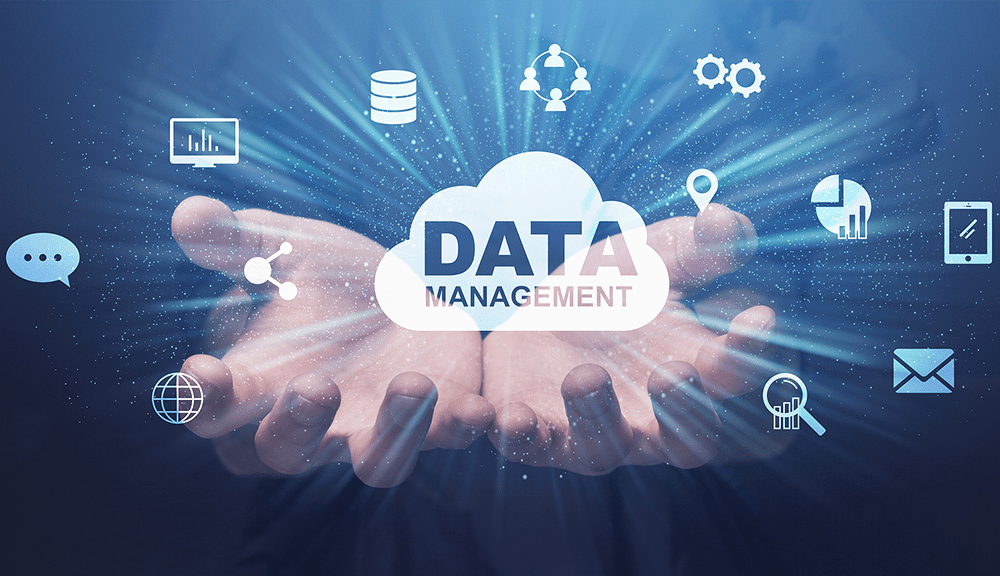B2B database management is important for all B2B business owners. If you don’t have a B2B database, you will find it hard to get leads for your business.
Effective database management is crucial for B2B businesses to stay competitive and drive growth. Managing a B2B database involves organizing, storing, and analyzing vast amounts of valuable information about clients, prospects, and leads.
Here are ten essential tips to optimize your B2B database management strategy and propel your business forward:
1# Understand Your Data Needs
Begin by identifying the specific data requirements of your business. Determine what information is essential for your sales, marketing, and customer service teams to effectively engage with prospects and customers.
Important information for your sales team could be past encounters, buying preferences, company details, and contact information for prospects.
Meanwhile, to properly customize their plans, your marketing team might need information on lead demographics, behavioral trends, and campaign performance indicators.
Similar to this, to provide great experiences, your customer care team might require access to client testimonials, support records, and satisfaction scores.
2# Invest in Quality Data
Quality data is the foundation of successful database management. Ensure that your data is accurate, up-to-date, and relevant to your business objectives. Regularly verify and cleanse your database to maintain its integrity.
Important information for your sales team could be past encounters, buying preferences, company details, and contact information for prospects.
In the meantime, to properly customize their plans, your marketing team might need information on lead demographics, behavioral trends, and campaign performance indicators.
To provide outstanding experiences, your customer care team might also require access to client reviews, past support records, and satisfaction scores.
3# Implement Data Governance Policies
Establish clear guidelines and procedures for managing and accessing data within your organization. Define roles and responsibilities for data management tasks and ensure compliance with data protection regulations.
Establishing precise rules and processes for data management and access is the first step toward putting good data governance policies into practice. This entails defining standard operating procedures for data validation and quality control in addition to defining protocols for data collection, storage, retention, and disposal.
Determining roles and duties for data management tasks inside your company is also essential. Assign people or groups to supervise data governance projects, enforce regulations, and carry out routine audits to verify compliance.
To reduce legal risks and safeguard sensitive data, make sure your data governance policies comply with applicable data protection laws, such as the CCPA or GDPR. To respect privacy and security standards, provide procedures for getting permission, protecting data access, and handling data breaches.
4# Centralize Your Database
Centralizing your database enables easy access to information and promotes consistency across departments. Consider using a robust CRM (Customer Relationship Management) system to streamline data storage and management processes.
Facilitating smooth data access is one of centralization’s main benefits. Employees can swiftly obtain the information they require without wasting time looking through several systems or files because all data is kept in one place. Teams are empowered to make well-informed decisions based on real-time data, which increases productivity.
Centralization also encourages uniformity in data management procedures. Businesses may eliminate errors, cut down on redundancies, and preserve data integrity by standardizing data storage and management procedures across divisions. This promotes cooperation and alignment across the whole organization by guaranteeing that all stakeholders have access to correct and current information.
5# Segment Your Data
Segmenting your database allows you to target specific customer segments with tailored marketing messages and offers. Divide your database into categories based on criteria such as industry, location, or purchasing behavior to personalize your communication effectively.
You can obtain deeper insights into the distinct needs, interests, and behaviors of various consumer categories by segmenting your data. Understanding each segment’s traits and preferences will help you create tailored communication tactics that speak to their unique interests and problems, increasing engagement and conversion.
One possible approach to delivering industry-specific content and solutions that align with the distinct difficulties and expectations of each sector is to segment your database based on industry verticals.
Comparably, location-based segmentation lets you customize your messaging to local tastes and market conditions while purchasing behavior-based segmentation lets you target valuable clients with offers and promotions that are pertinent to them.
6# Regularly Update Your Database
Keep your database current by regularly updating contact information, preferences, and engagement history. Set up automated processes to capture and integrate new data into your database in real-time.
It is crucial to routinely update contact details, preferences, and engagement history to keep your database up-to-date. This entails immediately updating client information in your database whenever there is a change in information such as email addresses, phone numbers, or work titles.
Additionally, you may better address the needs of your target audience by customizing interactions and marketing campaigns by monitoring consumer preferences and engagement histories.
Consider implementing automated procedures to gather and instantly incorporate fresh data into your database to expedite the update process.
This ensures that your database always has the most recent information in it and does away with the need for human data entering.
7# Prioritize Data Security
Protect sensitive information stored in your database by implementing robust security measures. Encrypt data, restrict access to authorized personnel only and regularly audit your database for potential vulnerabilities.
It is crucial to routinely update contact details, preferences, and engagement history to keep your database up to date. This entails immediately updating client information in your database whenever there is a change in information such as email addresses, phone numbers, or work titles.
Customize interactions and campaigns by monitoring consumer preferences. Address the needs of the target audience effectively for enhanced engagement and satisfaction.
Consider implementing automated procedures to gather and instantly incorporate fresh data into your database to expedite the update process.
This ensures that your database always has the most recent information in it and does away with the need for human data entry.
8# Leverage Data Analytics
Utilize data analytics tools to gain insights into customer behavior, trends, and preferences. Analyze the data to identify opportunities for cross-selling, upselling, and customer retention strategies.
With the use of data analytics technologies, organizations may effectively evaluate enormous volumes of data and derive useful insights for decision-making. Businesses can find chances for cross-selling, upselling, and client retention tactics by looking at customer interactions, purchasing trends, and engagement data.
For instance, examining consumer data may highlight trends that point to particular goods or services that customers commonly buy in tandem, allowing companies to design focused cross-selling efforts.
Analyzing consumer preferences and behavior can also be used to spot upselling possibilities by suggesting premium upgrades or complementary products.
9# Train Your Team
Provide comprehensive training for your team on database management best practices, tools, and software. Empower your employees to effectively use data to inform decision-making and drive business growth.
Thorough training gives your staff the knowledge and skills they need to confidently handle sophisticated database management systems. You may improve employees’ capacity to use data effectively in their responsibilities by acquainting them with database management principles, which include data collection, storage, analysis, and interpretation.
Additionally, training in database administration software and tools helps your staff fully utilize technology for data management and analysis. You can increase productivity, optimize processes, and produce better results by giving hands-on experience with solutions like automation software, data analytics platforms, and CRM (Customer Relationship Management) systems.
10# Continuously Monitor and Optimize
Monitor key performance indicators (KPIs) related to database management, such as data accuracy, completeness, and engagement metrics. Continuously optimize your database management strategy based on insights gathered from data analysis and feedback from stakeholders.
Through diligently tracking database management key performance indicators (KPIs) and utilizing insights from data analysis and stakeholder feedback, you can pinpoint areas that require enhancement and fine-tune your strategy to achieve superior results.
Keeping an eye on key performance indicators (KPIs) like engagement metrics, data completeness, and correctness can give you important information about how well your database is functioning. Regular monitoring detects anomalies, ensuring data accuracy. Take swift action to maintain data reliability and integrity. Protect your business’s credibility.
Moreover, ongoing optimization entails adjusting your database management plan in response to stakeholder comments and data analysis insights.
Conclusion
By following these ten tips for B2B database management, you can ensure that your business maximizes the value of its data assets and maintains a competitive edge in today’s dynamic marketplace. Invest in quality data, implement robust processes, and empower your team to leverage data effectively to drive business success.
If you want to improve your data management game, we are here to help. To learn more, contact us now.






